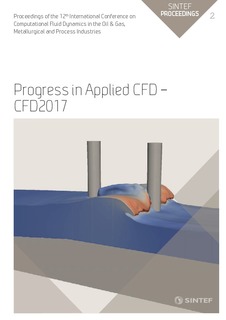| dc.description.abstract | Flow dynamics of liquid steel within the Continuous Casting (CC) mould are critical for process stability and the quality of final products. An “optimal” flow provides enough circulation of the metal to avoid freezing, but it is stable enough to avoid defects during solidification. This requires a trade-off between speed and stability that is difficult to achieve for the variety of conditions faced by the Scandinavian steel industry (e.g. small orders with high variability in size and steel grades). This is difficult to address with typical CFD models used by the industry and suppliers for design of flow control devices (nozzle, stoppers, etc.), since flow optimization requires a better understanding of the level instabilities inside the mould (i.e. free surface) and its highly turbulent behaviour. Consequently, CC requires advanced multiphase models as well as accurate turbulent and time scales resolution. The investigation presented uses a multiphase approach (Volume of Fluid, VOF + Discrete Phase Modelling, DPM) to solve the molten steel and argon injection within the mould combined with Large Eddy Simulation (LES) to improve the resolution of turbulent scales compared to typical 2-equation models. CFD simulations were successfully validated with results from a Continuous Casting Simulator using a low melting point alloy. Then, these tools were used to design and test different SEN types for various mould sizes in order to optimize their flow pattern and performance in the mould. The project included a comprehensive set of plant trials at an industrial caster to validate/calibrate model predictions, test nozzle resistance and explore process improvement opportunities. | nb_NO |
